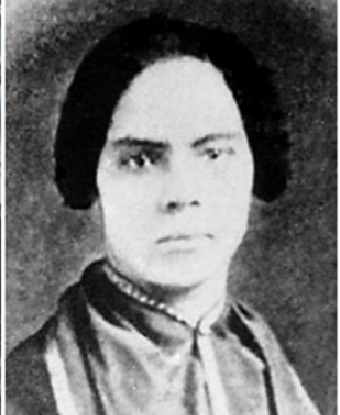Last updated: July 8, 2019
Person
Mary Ann Shadd Cary

Photo courtesy of National Archives of Canada, C-029977
Mary Ann Shadd Cary was an African American activist, writer, teacher, and lawyer. She was born in 1823 in the slave state of Delaware. Her parents were free African Americans who were dedicated to abolitionism. When she was 10 years old, Shadd moved with her family to the free state of Pennsylvania where she attended school and became a teacher.
Shadd and her family actively helped freedom seekers (people who escaped slavery). The Shadd family’s participation in the Underground Railroad became even more dangerous after 1850 when Congress passed the Fugitive Slave Act. This law made it legal to force freedom seekers in free states to return to enslavement. The law could also punish people like the Shadd family, who helped freedom seekers escape.
After the passage of this law, Mary Ann Shadd moved to Ontario, Canada to join other black Americans who left the United States. While in Canada, she married a man named Thomas J. Cary and they had two children. Now Mrs. Cary, she opened a school for black and white students. She also wrote and lectured about the importance of freedom while she was living Canada. Cary became the first black, female newspaper editor in North American history when she published Canada’s first antislavery newspaper, The Provincial Freeman.
In 1860, Cary’s husband passed away. A year later, Civil War broke out in the United States between northern and southern states. Cary returned to the U.S. to help recruit soldiers for the Union Army. After the war, she enrolled in the first class of Howard University Law School located in Washington, DC. She attended evening classes at Howard and taught local children during the day.
While living in DC, Cary continued to work as a political activist, a teacher, and a writer. She also wrote for a local African American newspaper The New National Era and gave public speeches to encourage African Americans to work together to recover from the slavery era. Cary was also a founder of the Colored Women's Progressive Franchise Association.
Cary also became involved in the women’s suffrage movement. She was a member of the National Woman Suffrage Association (NWSA) and spoke at the NWSA's 1878 convention. She also advocated for the Fourteenth and Fifteenth Amendments at a House Judiciary Committee hearing. The Fourteenth Amendment defined citizenship and the Fifteenth Amendment granted African American men the right to vote. While Cary spoke in support of the Fifteenth Amendment, she was also critical of it as it did not give women the right to vote.
Toward the end of her life, Cary lived in a brick row house on W Street in Northwest DC. Today, the house is listed as a National Historic Landmark as it helps us understand her life and work as an advocate for the equality of all people.
Mary Ann Shadd Cary died of stomach cancer on June 5, 1893. She was buried at Columbian Harmony Cemetery in Washington, DC. In the late 1950s, the approximately 37,000 interred here were moved to National Harmony Memorial Park in Landover, Maryland.
Sources:
Rhodes, Jane. Mary Ann Shadd Cary: The Black Press and Protest in the Nineteenth Century. Bloomington: Indiana University, 1998.
Tobin, Jacqueline and Hettie Jones. From Midnight To Dawn: The Last Tracks of the Underground Railroad. New York: Double Day, 2007.
Yee, Shirley J. “Finding A Place: Mary Ann Shadd Cary and the Dilemmas of Black Migration to Canada, 1850-1870.” Frontiers: A Journal of Women Studies 18, No. 3 (1997): 1-16.
Harmony Memorial Park." Maryland Inventory of Historic Properties Form. Maryland Historical Trust 2009. Accessed 11-10-2016.
Mary Ann Shadd Cary,” National Women’s Hall of Fame. Accessed May 10, 2018. https://www.womenofthehall.org/inductee/mary-ann-shadd-cary/
